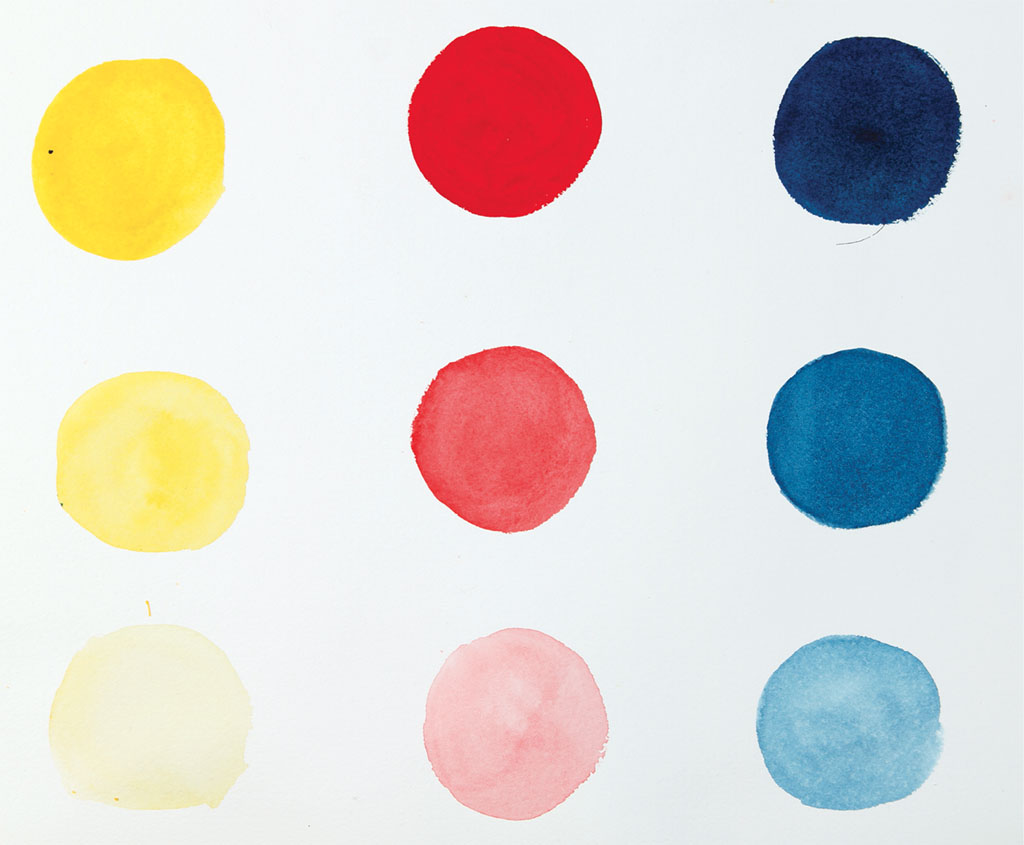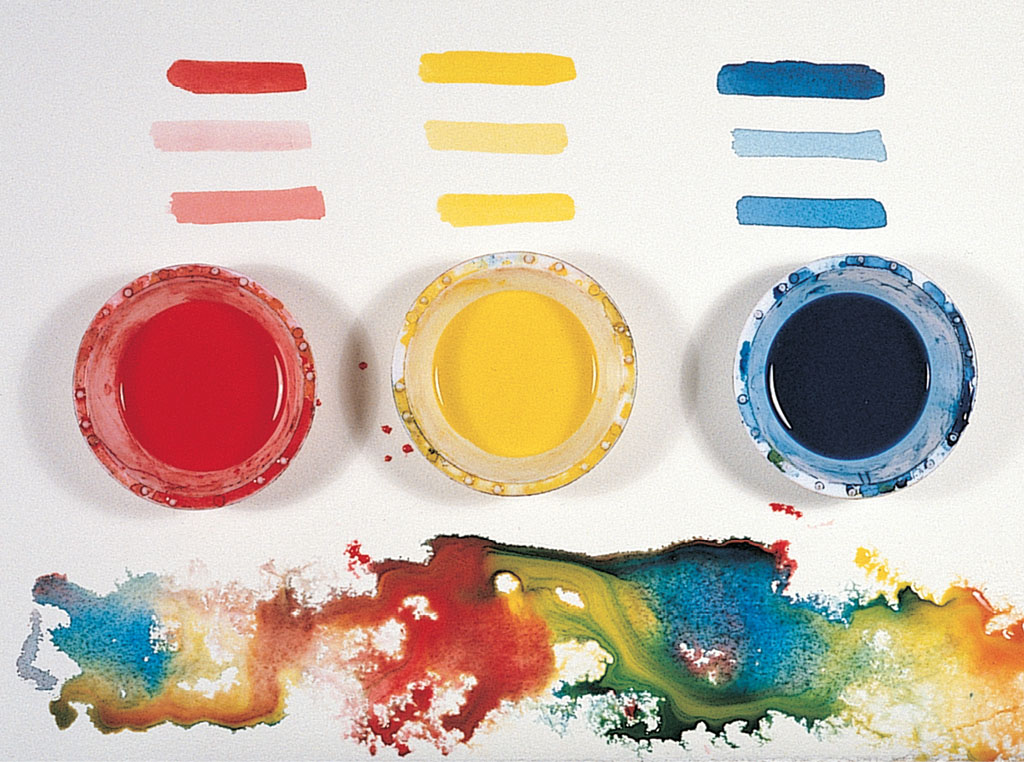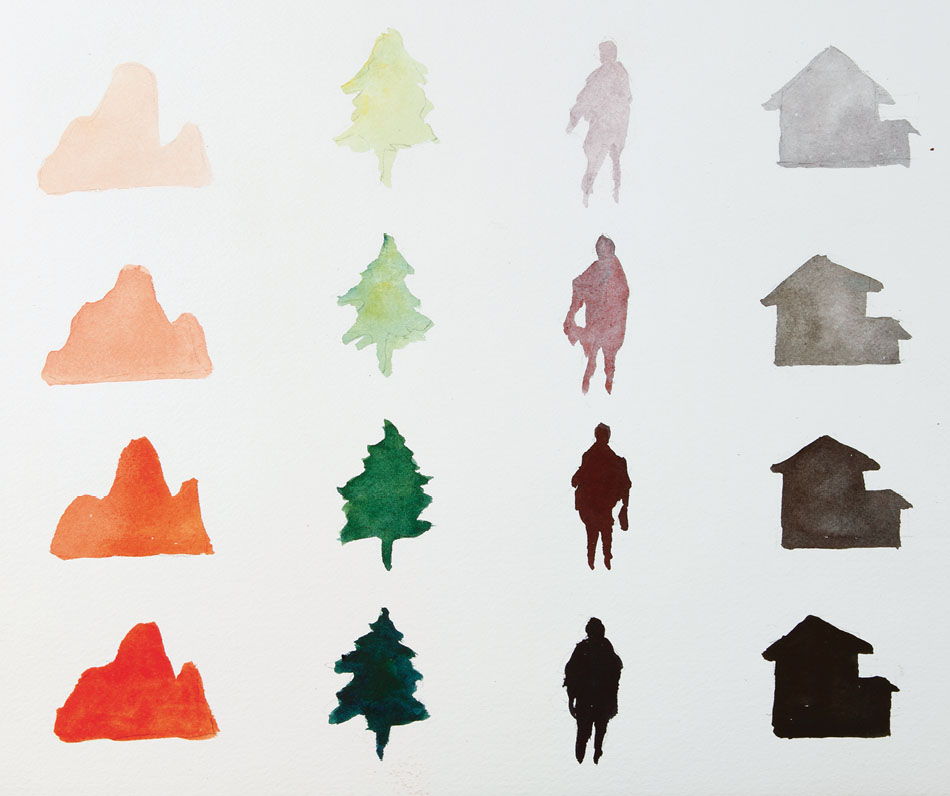
There are many benefits to using a limited palette. With the three primary colors you can create many secondary colors. Also, it’s easier to achieve a dominant color in a painting. A limited palette also helps keep the painting from becoming muddy. For whites, I preserve the white of the paper. Sometimes I use masking fluid to help me do this. To get dark colors, I mix undiluted blue with a little undiluted red and a small amount of water (see below).
Color pouring and blending is a wonderful technique I use in my watercolor paintings. It is achieved by wetting the surface with a spray bottle, and pouring diluted pigments next to each other so they follow the water and run into each other. Spray the poured pigment with more water and use your fingers and brushes to mix and blend. You can also tilt the watercolor paper to flow the pigment or use your mouth to blow the paint to dry areas of the paper. Once you are familiar with how color liquids behave and their effects under various amounts of water, you will be able to achieve endless effects in your paintings.

For the pouring and blending technique, you generally want to mix a medium value, in between a dark, thick mixture and a light, runny mixture. Here, the top row shows fresh and thick pigment just out of the tube and diluted with very little water—much too thick for color pouring. The middle row is diluted to a middle value, ideal for the color pouring and blending technique. The bottom row is diluted with a lot of water and is much too light for color pouring and blending.

To prepare diluted paint for pouring and blending, mix each color with clear water in a small dish, using a separate brush to stir each color. There are two rules of thumb for making diluted colors: first, to darken the value of a painting, use stronger values of the blue and red mixtures. To lighten the value, use weaker values of the blue and red mixtures. Second, never create anything darker than a medium value of yellow or it will become muddy.

Experiment with color mixing and diluting those mixtures with water to achieve middle values. From left to right, the mixtures here are yellow and red, yellow and blue, red and blue, and a blend of all three mixtures.